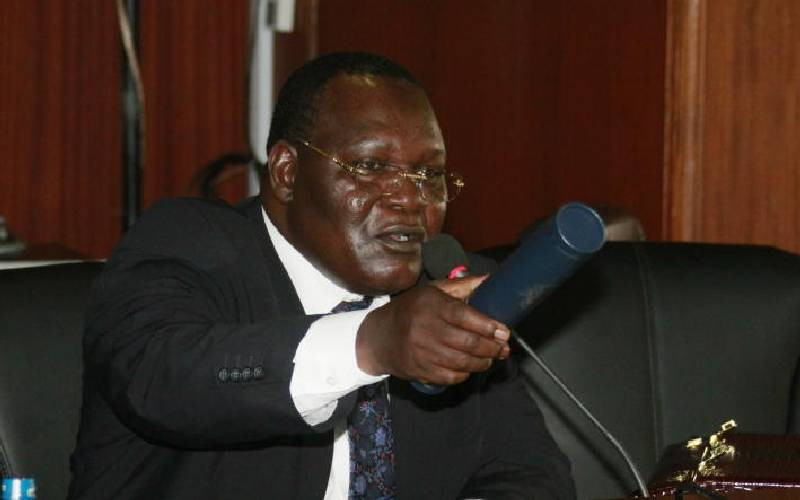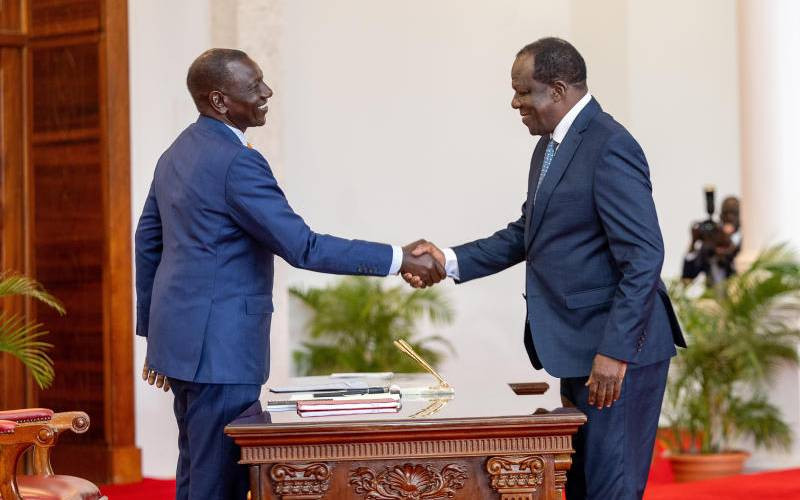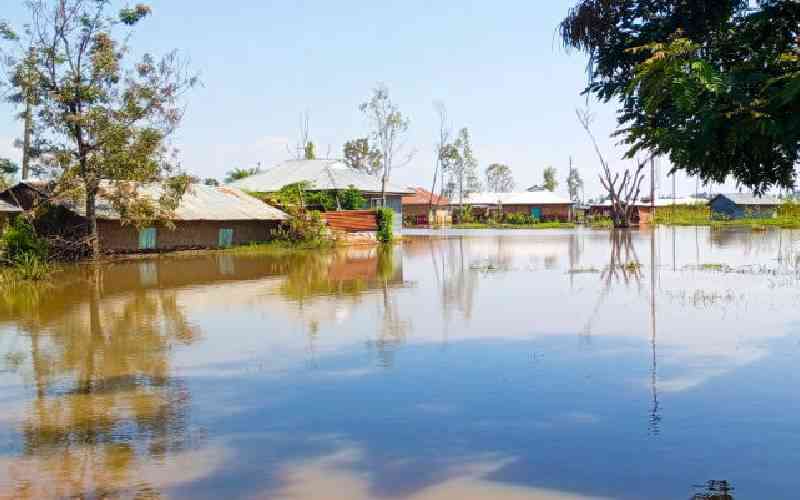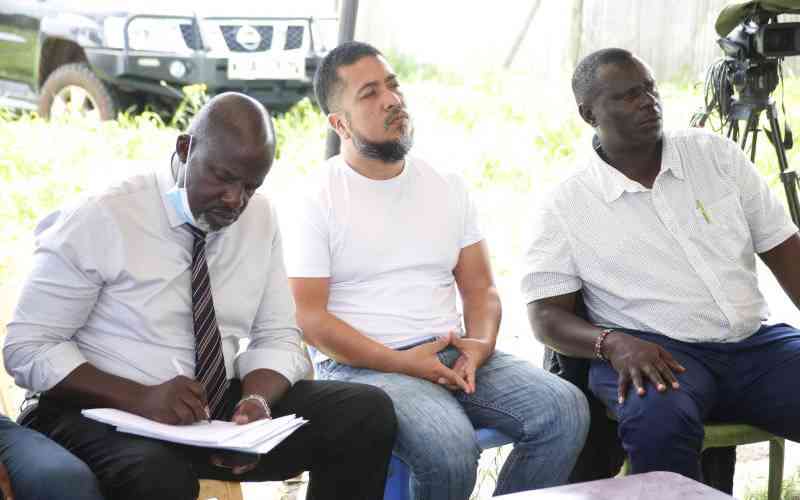th October) is the World Teachers’ Day and the teaching professionals in Kenya are faced with both good and bad as they celebrate their day. The good news is that the Government has implemented the negotiated deal to put contract teachers on permanent terms, but the fact that parents and the Government are expecting teachers in public schools to do their best in places that are literally falling apart isn’t good news. According to the United Nations Educational Scientific and Cultural Organisation (Unesco), more than 47 per cent of primary schools are in a state of disrepair to an extent of almost crumbling. However, the looming crisis is that of teacher shortage where about 70,000 teachers are urgently needed if we have to cater for the soaring enrolment created by the free primary education programme, introduced in 2003.
However, this problem is not unique to Kenya alone. The same is happening elsewhere in sub-Saharan Africa, a region with more than a million vacant teaching positions.
"Sub-Saharan Africa will need to recruit 350,000 new primary school teachers per year up to 2015 to ensure every child has access to quality education," says Unesco, in an update of teacher shortage in the sub-region.
The prevailing situation is that all countries in sub-Saharan Africa — with exception of Botswana, Madagascar, Mauritius, Sao Tome and Principe, and Seychelles — need to hire more teachers. Basically, the demand for new recruitment is almost two-thirds of the existing teacher number in the region," says Hendrik van der Pol, Director of Unesco Institute for Statistics in Paris, France.
So far, the most critical teacher gaps in the sub-region are in Burkina Faso, Chad and Niger, which according to Unesco, must double the size of their teaching forces by 2015 to be on track towards achieving the goal of Universal Primary Education.
Gaps also exist in Central African Republic and Eritrea where there is need to triple the stocks. But whereas Kenya is not hard pressed as some of the countries in the region with over-burdened education systems, there are worries on its academic agenda.
Teachers’ challenges
In the first place, Kenya has come up with the ambitious Vision 2030, an initiative that is expected to catapult the country into a medium-developed State in less than two decades. However, there is no way Vision 2030 will be realised without universal access to quality education, which is dependent on teachers ability to improve pupils’ learning outcomes.
Granted, teacher shortage in public primary schools represents one of the greatest hurdles to achieving education for all and quality education. There is also the issue of attitude on how teachers are treated by the Government and the communities that they serve.
According to Unesco, teachers are defined as professional personnel involved in direct student instruction involving planning, organising and conducting group activities to develop students’ knowledge, skills and attitudes as stipulated by education programmes.
By this definition, teachers’ professional expertise, first and foremost, lies in being able, through training and experience, to help children to learn. Teachers also play an important role in transmitting cultural and social values that include tolerance, dialogue in societal conflict resolution and gender equality.
However, in many countries in sub-Saharan Africa there has developed a general attitude where teachers are regarded as child minders or grassroots’ social workers. Unesco says teaching has increasingly lost prestige as governments tried to control teacher costs by bringing in large numbers of unqualified or contract teachers or supplementing school capacity with teacher aides, volunteer workers and other categories of para-teaching staff.
This has the effect of not just lowering the average qualification and experience level of the teaching force, but also of lowering the prestige of teachers in communities and more negatively in the eyes of their pupils. For instance, in Namibia only 38 per cent of teachers in primary schools are trained, while in Botswana, Malawi and Tanzania most primary school teachers hold lower secondary qualifications.
Quite often, teachers holding lower secondary education qualifications have not been very effective in teaching of maths, sciences and reading. According to Unesco’s Southern and Eastern African Consortium for Monitoring Education Quality, pupil achievement is lowest in countries where they are taught by teachers with only nine years of education.
Stay informed. Subscribe to our newsletter
"For instance, in Lesotho, almost 50 per cent of primary school pupils are taught key primary subjects by teachers with only primary education qualifications, not much more than the pupils they teach," says SACMEQ.
No guidelines on age
However, the situation is not so different in Kenya’s public schools where upper primary pupils are often taught key subjects by teachers who had scored an average of D at KCSE exams. Besides often lacking the relevant qualifications, most teachers are ill-prepared to teach pupils of different age groups.
Since the introduction of the free primary learning, there has been no guideline on the maximum age for which one can enroll in a specific class, hence most learners enter school being over-age or became over-age of a specific class due to repetition. According to Unesco, 80 per cent of pupils in public schools are over-age.
Even then, teaching in Kenya’s public sector is ridden with problems of providing sufficient instructional time to pupils. Whereas teachers have the lowest teaching load in the world, there is chronic teacher absenteeism, which has been attributed to indiscipline. Unesco says teachers in Kenya and Uganda are teaching between 480 and 500 hours a year compared to between700 and 1,000 hours in other countries.
Nevertheless, teaching load in Kenya’s primary schools is heavily eroded as teachers have also one of the highest prevalence rates of absenteeism in the world. According to Helen Abadzi, a Senior Education Specialist at the World Bank, pupils in public schools in Kenya lose 30 per cent of the scheduled contact time with teachers.
In addition to teacher absenteeism, real instructional time is reduced by strikes, punishment, and pupil absence from school and copying as a result of having no textbooks. Abadzi argues cumulatively, efficiency of some education systems may be less than seven per cent.
The crux of the matter is that quality of education in Kenya’s public primary schools has dropped. As teachers celebrate the World Teachers’ Day, there is need to evaluate and take into account whether teachers have enough tools to make children learn.
 The Standard Group Plc is a
multi-media organization with investments in media platforms spanning newspaper
print operations, television, radio broadcasting, digital and online services. The
Standard Group is recognized as a leading multi-media house in Kenya with a key
influence in matters of national and international interest.
The Standard Group Plc is a
multi-media organization with investments in media platforms spanning newspaper
print operations, television, radio broadcasting, digital and online services. The
Standard Group is recognized as a leading multi-media house in Kenya with a key
influence in matters of national and international interest.
 The Standard Group Plc is a
multi-media organization with investments in media platforms spanning newspaper
print operations, television, radio broadcasting, digital and online services. The
Standard Group is recognized as a leading multi-media house in Kenya with a key
influence in matters of national and international interest.
The Standard Group Plc is a
multi-media organization with investments in media platforms spanning newspaper
print operations, television, radio broadcasting, digital and online services. The
Standard Group is recognized as a leading multi-media house in Kenya with a key
influence in matters of national and international interest.








